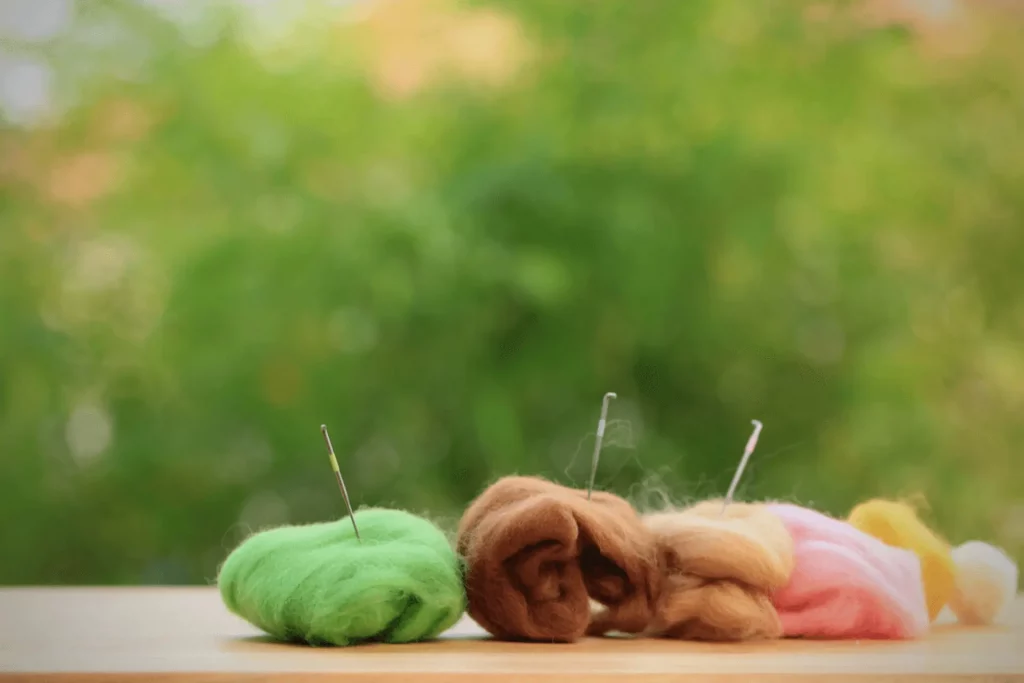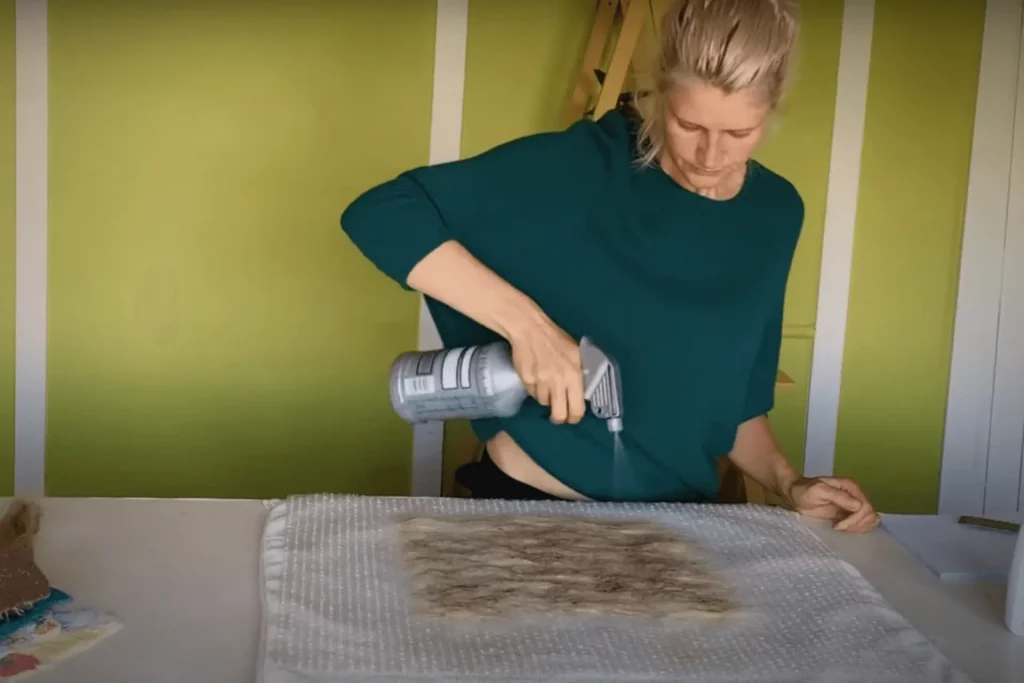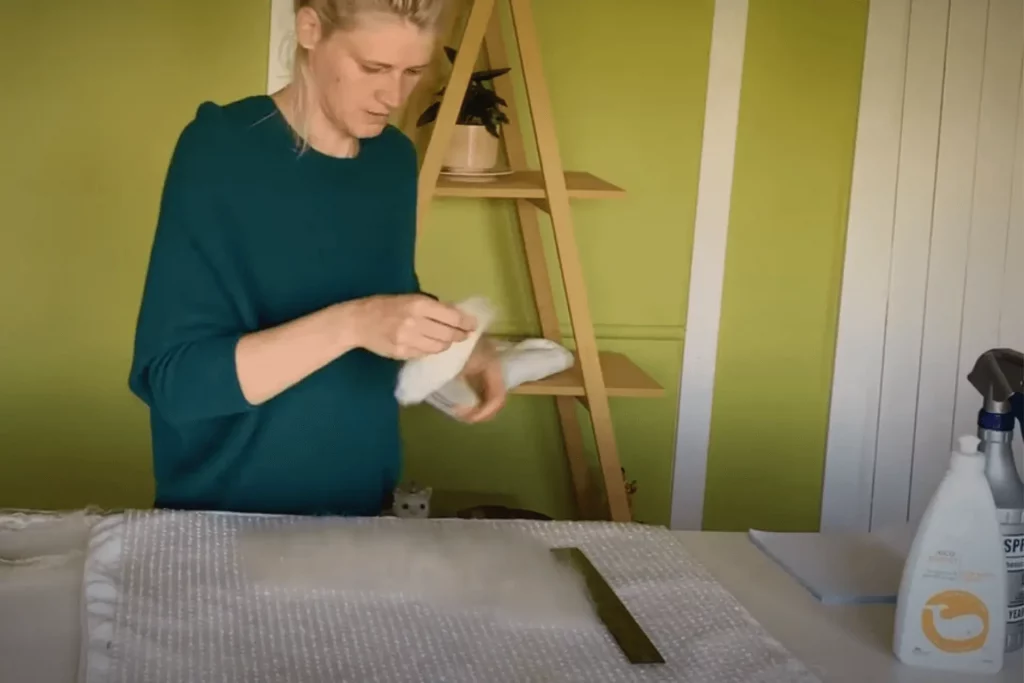Felting may be an intimidating hobby for beginners since there is such a wide selection of wool to choose from, and each one serves a specific purpose. The following is critical information on some of the most popular types of fiber and yarn and how they should be utilized while building the base for your needle felted product, adding colors, and adding fine detail.
When it comes to felting, there are no strict guidelines to follow; instead, this guidance is based on the tastes and experiences of the author. If you are new to the art of needle felting, it is recommended that you begin by purchasing a step-by-step kit that includes all of the necessary tools. This will allow you to become familiar with the various needle felting techniques and textures before you go on to experimentation.
Table of Contents
What Exactly is Meant by Felted Merino?
The term “felted Merino” refers to wool that has been tugged, pressed, or otherwise agitated with some wetness to get the fibers to create a thick, sturdy yarn. This yarn is then used to manufacture things like blankets and sweaters.
It is possible to create felted Merino by using the primary method of hand pulling, in which the moisture comes from your hands, and the pressure comes from tugging it repeatedly. To feel Merino wool for crafts that require tighter stitches and are intended to withstand much use, you can use either a washing machine or a dryer.
Does Merino Wool Need to Be Felted?
Merino wool roving is a kind of wool that has been subjected to mild processing to produce loosely intertwined fibers but can still be separated with relative ease. The material may still be stitched, shrunk, or shed in this condition, and it can also be used for anything from batting or stuffing to other types of crafts. Typically, it is offered for sale in the form of yarn balls.
Felting results in a denser, more robust material and may be worked with in various ways, including crocheting, knitting, and sewing.
By felting your wool, you will reduce the shrinkage and shedding in your finished product and make your yarn more manageable. The itchiness often associated with the thread is decreased significantly by felting, making the material more pleasant to the touch.
How Should Merino Wool Be Felted?

One of its many beautiful qualities is that merino wool can be easily felted. This means you can take a garment constructed with this fabric and transform it into something completely different. Merino wool can be felted in the following way:
- To begin, thoroughly saturate the clothing in water. You may get this result by either immersing it in water or cleaning it with water from a hose.
- Once the garment is soaked, continue vigorously rubbing it with your hands to remove any excess water. This will aid in breaking down the fibers, which is the first step in felting.
- Maintain the rubbing motion on the fabric until it begins to contract and has a brittle texture to the touch. This may take several minutes, so please be patient.
- After the wool has been felted, give it a last washing in some lukewarm water to eliminate any trace of soap.
- Before wearing or using the item, let the clothing air dry first.
You may quickly turn an item of clothing made from merino wool into something different with little time and effort. Therefore, the next time you get the urge to do something creative, give felting a shot!
Methods to Felt Merino Wool:
When it comes to making felt out of Merino wool, there are a few various approaches you may use. Depending on your preference, the wool may be felted by hand or machine.
The most common and time-honored approach to felting wool is called hand-felting. Wool must be wet before being rubbed briskly with one’s hands to create the felting effect known as “hand-felting.” Because of the heat generated by your hands, the wool will begin to condense and tighten, making it more challenging to work with.
Wool may be felted more quickly using a machine than by hand. Yarn must be washed in a washing machine set to a high temperature for it to be felted using a machine. Wool will begin to shrink as a result of the agitation that is caused by the washing machine. This is because the fibers will start to bond together.
Here are Several Methods:
Method 1: To Dry the Felting, a Spray Bottle, and Dryer

You may feel your wool by using a drier and a spray bottle. This will allow you to keep most of the wool’s natural diameter while reducing the amount of shedding and producing a more durable material.
To begin, place the wool on a table or the floor and make a loose coil by pulling it through the other hand with one hand while holding it in the other.
To prevent the yarn from becoming tangled in the dryer and maintain its coil shape, tie it loosely in two places, working outward from the center using the ends or some other material. You may wet your yarn by spraying it with the bottle. Dry it on the lowest setting for ten to fifteen minutes after you’ve placed it in the dryer.
Method 2: Hand Felting for Big Stitch Work

The process of felting can be simplified by applying friction to the wool by simply pulling on it with your hands. Creating a weave and diameter with your hands alone will result in a product that is ideal for large-scale stitching jobs. When working on projects in which you want to keep as much of the original material’s fluffy texture as possible, use this approach.
In order to dry felt your wool by hand, you must first grab the wool in one hand and then draw it through a semi-tight grip held in the other hand until you reach the other end of the wool.
The coils should be laid out in a friendly and orderly fashion on a clean table or floor. Repeat this process as many times as necessary for the wool to achieve the desired size and weave strength, which is often between three and four times.
Method 3: Complete Felting (Hot Water Machine Wash)

In the improbable event that you want your Merino wool to become entirely felted (take notice that this technique is not in all encouraged for blankets or any object that you wish to keep soft), you may wash it in hot water to make it challenging, long-lasting, and far more compact.
Method 4: Felting With Wet Wool for Knitting and Crochet Projects

It is recommended that you choose a method of felting that is more comprehensive if you have a front-loading washing machine. Felting with water is excellent for producing wearable items like sweaters and caps.
Not only does it result in yarn with the tiniest possible diameter, but it is also the most effective approach for minimizing the amount of discomfort and shrinking that occurs in the fabric.
To begin, wrap the roving over the backs of two chairs that have been pulled together so that they are side by side. Tie off the coil at four different spots, working from the center to the outside. Use material that is either the same color as the wool you are felting or lighter in color than the wool.
You may use the wash and spin cycle on your washing machine to clean your coil. If you may choose the type of spin, select the one that produces the least amount of yarn for the amount you need to make. When working with smaller quantities, a lower spin speed should be used.
After the cycle of the washing machine has been completed, take the yarn and cut the bindings. Your wool should be hung to dry on a giant drying rack that is placed in a well-ventilated location.
Is it Possible to Felt Wool by Hand?
You might wet feel your wool by hand in various ways if you do not desire to use a machine but require a tighter weave than possible with the hand-pulling approach described above. One of the most common approaches involves using a pail of hot water and another instrument to stir the fabric.
The end product will benefit most from bucket felting because the process of felting will cause the final product to have a tighter knit than when you started; use a stitch that is laxer.
After placing your product in a bucket or other big container filled with hot water and agitating it for the necessary amount of time, it will attain the proper consistency. You might make the process easier on yourself by purchasing a brand-new plunger.
When you have achieved the correct consistency, please give it a few lights squeezes to remove any extra water, then hang it out to dry somewhere with adequate ventilation. Avoid using clothes pins at all costs since they can cause the fabric to pull away from the wet weight, resulting in misshaped stitches.
Pros and Cons of Felting Merino Wool:
Pros:
- It has a velvety feel.
- It felts well.
- It works well for wet felting.
- Simple to locate.
Cons:
- It isn’t easy to feel because the strands are thin and tend to fly away.
- Even after fully felted, it retains its squishy and sponge-like texture.
- It is more challenging to conceal lines because it is so fine.
Frequently Asked Questions:
Can you needle feel Merino wool?
If you’ve done needle felting, I can almost guarantee you’ve worked with Merino wool. Because of its delicate and smooth consistency, needle felters use it as their material of choice.
How exactly does one use a washing machine to feel wool?
The washing machine must be set to either 40 or 60 degrees Celsius for the complete cycle of the felting process. You should use regular washing powder rather than wool wash and run the entire standard or cotton cycle rather than the woolen iron or delicates cycle. Standard washing powder is available at most grocery stores.
Why isn’t my wool turning into felt?
Insufficient use of the water resource. When starting wet felting, novices typically underestimate how much water they need during the process. You must be pretty generous. If you don’t use a sufficient amount of water, the soap won’t be able to form a lather, and the wool won’t be adequately felted.
Bottom Line:
So, there you have it! How to felt merino wool. It is so easy and fun, and the results are always satisfying. Be sure to give it a try yourself and see how your creations turn out.

